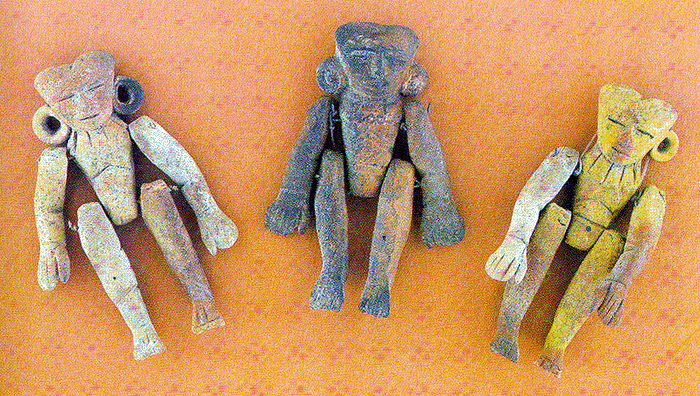From Wikepedia: The word poppet is an older spelling of puppet, from the Middle English popet, meaning a small child or doll. In British English it continues to hold this meaning.
Nowadays we know poppet as a distinctly separate thing (in pagan circles) but it is interesting to note that that the term is also one of endearment. In truth, at it's basest definition, a poppet is a puppet, a figure representing someone or something else, used in magic and ritual. I would venture that, originally, that definition would have described the puppet to a T.
Today, many cultures still use puppets in ritual, in particular in ritual dramas. The magical origins of puppetry are not a secret because our little friends are still quite merrily serving that purpose all over the world... despite the scarcity of them in Western magic. Puppets relay myth, stand in for characters in ritual, and become the center of energy in spellwork.
Quite the versatile magical tool.
Puppet sculpture from Mesoamerica
Japanese Ritual Puppetry
Shaman Puppet Dolls
Throughout his life, the puppet has been infused with magic and ritual. From his creation, to performing. Puppetry has been regarded as a sacred art, protected by secrecy and ritual, and reserved for those only with the correct spiritual associations to be trusted with giving it life.
As we'll see, what the puppet brings to the equation is truly something more than her parts and pieces. She is magic, at her core, and belongs among the most respected of magical traditions.



No comments:
Post a Comment